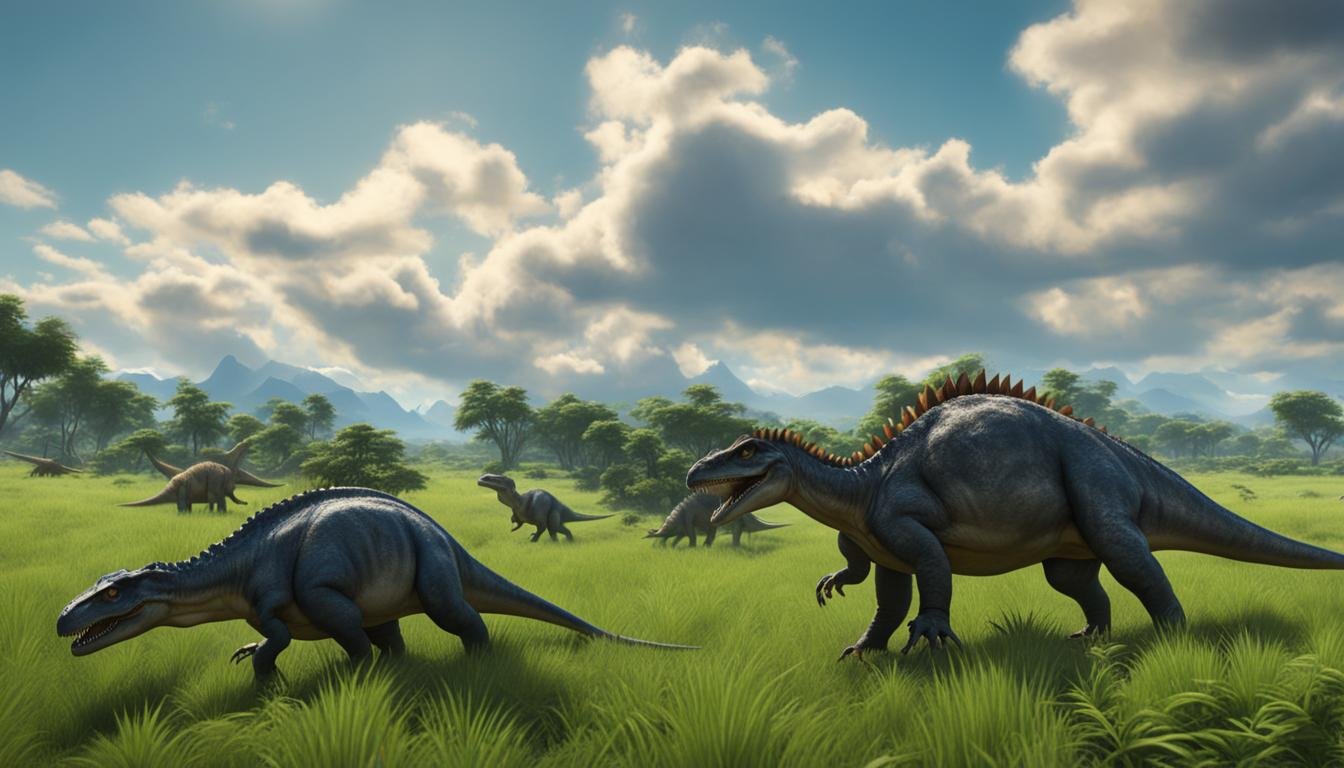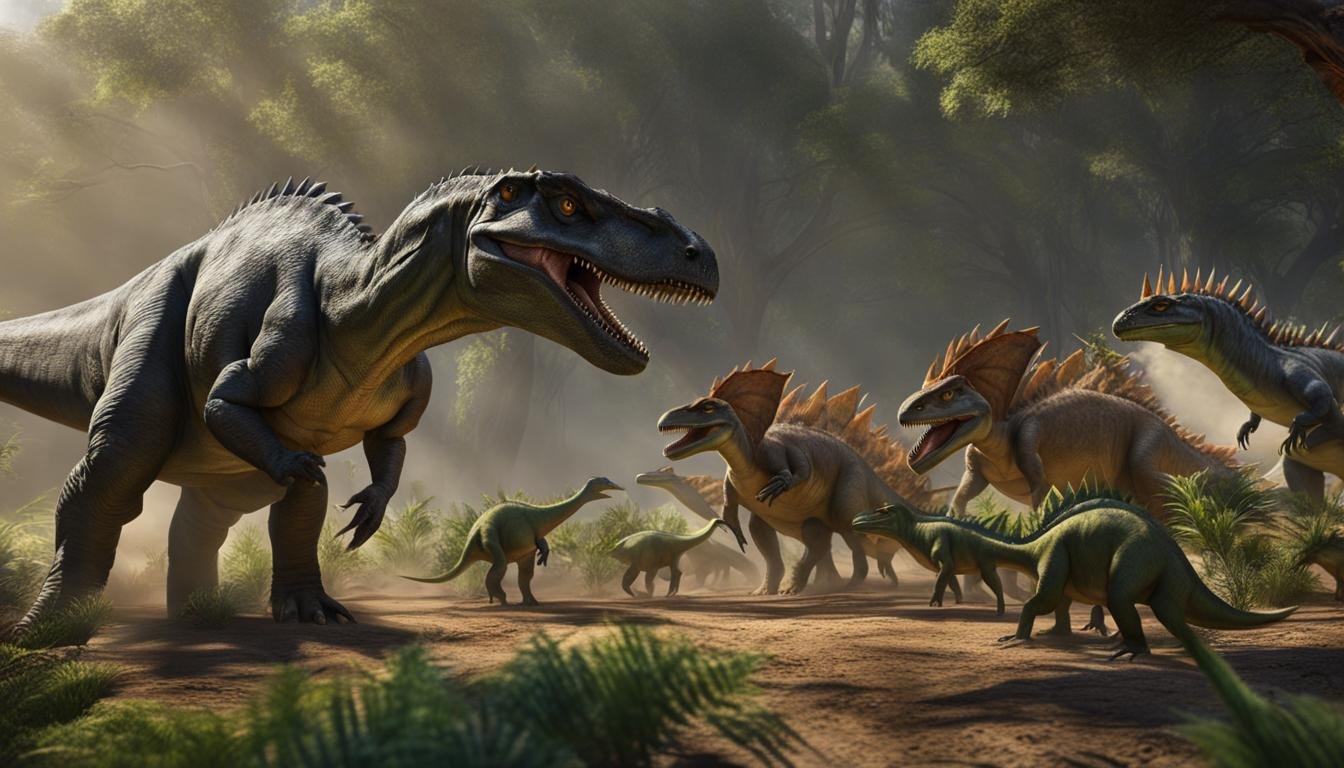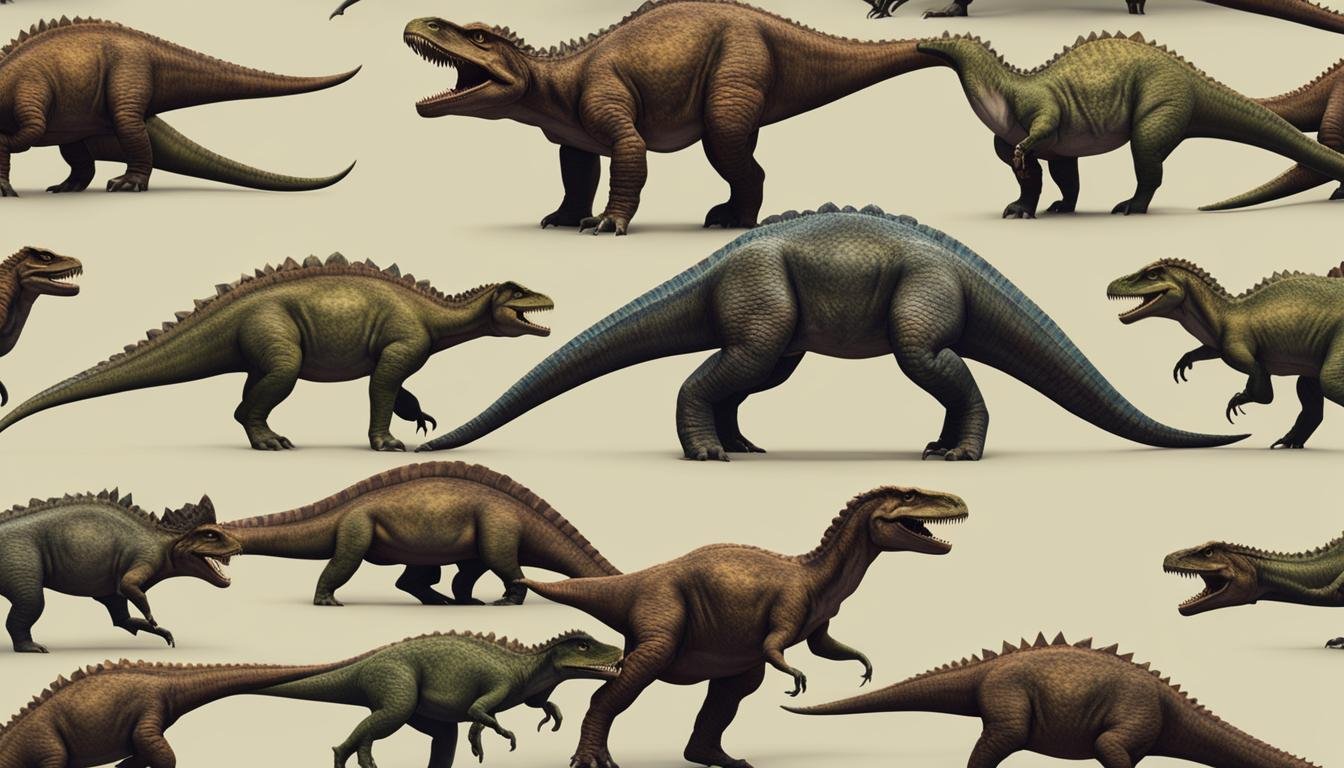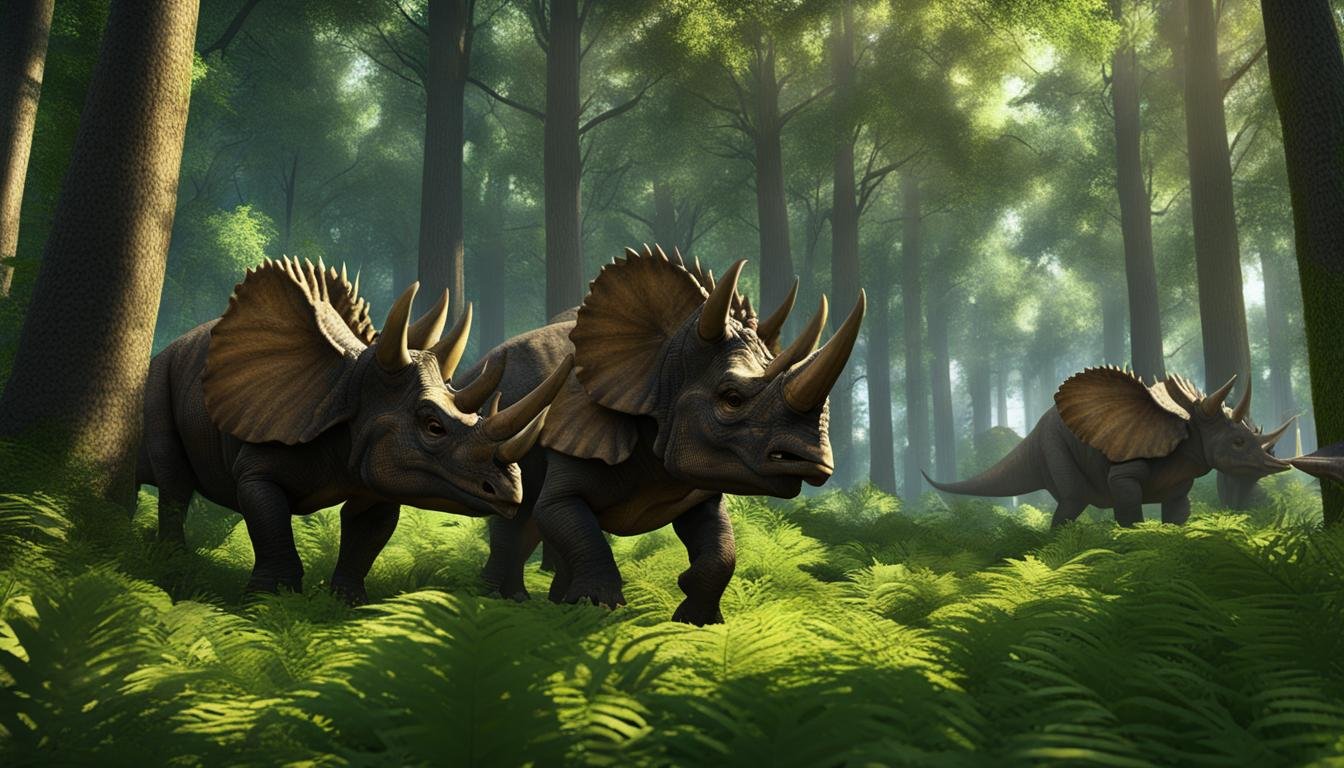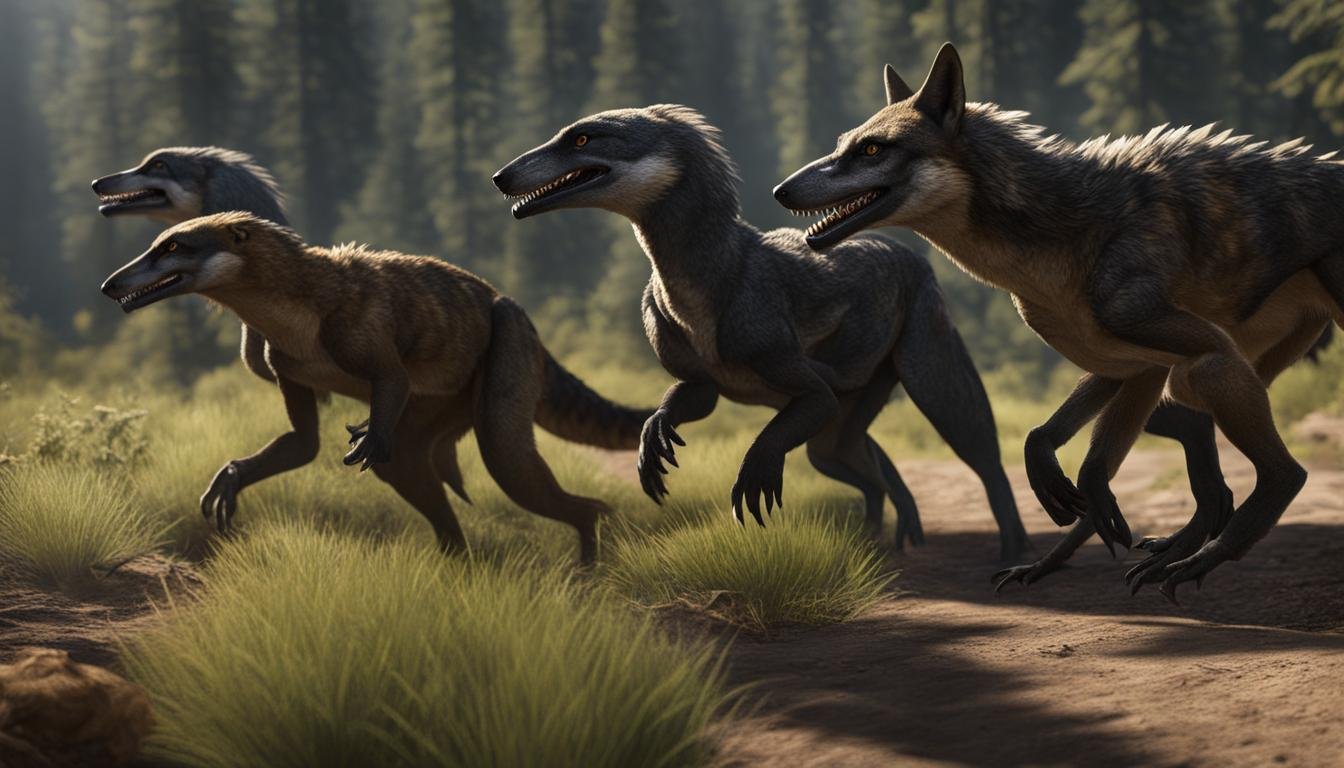New research has unveiled fascinating insights into the herding behaviors of dinosaurs, revealing a complex social grouping that existed as early as 193 million years ago. These findings, which come 40 million years earlier than previously believed, shed light on the communal nature of dinosaurs and provide valuable clues about their defensive strategies. Through the examination of fossil evidence and paleobiological studies, scientists have unraveled the mysteries surrounding the herding behaviors in dinosaurs, particularly in sauropod herds.
| Key Takeaway | Detail |
|---|---|
| Herding Timeline | Herding behaviors in dinosaurs date back to 193 million years ago, which is 40 million years earlier than previously thought. |
| Egg Grouping | Discovery of dinosaur eggs grouped by age, suggesting communal nesting behavior and shared parental care among dinosaurs. |
| Defensive Advantages | Living in herds provided dinosaurs with enhanced defense against predators, improving their survival chances. |
| Coordinated Activities | Herding enabled dinosaurs to engage in coordinated activities, such as foraging for food and avoiding predators. |
| Reproductive Success | The grouping in reproductive behaviors and nesting habits was crucial for the survival and reproductive success of dinosaurs. |
Migration Patterns and Defensive Strategies
The discovery of herding behavior in dinosaurs sheds new light on their migration patterns and defensive strategies. Living in herds allowed dinosaurs to better defend themselves against predators and avoid being targeted individually. By migrating collectively, dinosaurs could take advantage of favorable seasonal conditions and find suitable nesting sites.
Dinosaurs exhibited territoriality, defending their group’s territory against other individuals or predators. This territorial behavior helped ensure their safety and survival. By forming herds, dinosaurs also benefited from the collective vigilance of the group, as multiple individuals could scan the surroundings for potential threats. This increased their chances of predator avoidance and survival.
In addition to defensive strategies, herding and migration patterns allowed dinosaurs to access new food sources and habitats. By moving as a cohesive group, dinosaurs could cover larger areas and exploit available resources more efficiently. This migration behavior also contributed to the ecological balance of their ecosystems by preventing overgrazing in one area and promoting the dispersion of seeds and other organisms.
| Migration Patterns and Defensive Strategies | Key Insights |
|---|---|
| Predator Avoidance | Living in herds allowed dinosaurs to defend against predators and avoid becoming easy targets. |
| Territoriality | Dinosaurs exhibited territorial behavior to protect their group’s territory and ensure safety. |
| Access to Resources | Migration patterns allowed dinosaurs to access new food sources and habitats, contributing to their ecological balance. |
| Survival Advantage | Herding and migration provided increased vigilance and collective defense, improving survival rates. |
Overall, the discovery of herding behaviors in dinosaurs provides valuable insights into their migration patterns and defensive strategies. These findings highlight the importance of social structures and cooperation among ancient species, shedding light on the fascinating world of dinosaur ecology.
Group Dynamics and Communication
The study on herding behaviors in dinosaurs highlights the importance of group dynamics and communication within these ancient species. Living in herds allowed dinosaurs to engage in cooperative behaviors and establish social structures. By communicating with each other, they were able to coordinate activities such as foraging and predator avoidance. These group dynamics and communication skills were essential for their survival and contributed to their evolutionary adaptations.
Species Interaction
Dinosaurs, like many other animals, relied on interaction with their own kind and with other species for various benefits. They formed social bonds and cooperated in tasks such as hunting, protecting their young, and defending against predators. These interactions enabled them to adapt and thrive in their environments.
Herd communication was crucial for dinosaurs to coordinate activities and ensure the safety and well-being of the group. Vocalizations, visual signals, and body language were likely used to convey important information such as the presence of predators, the location of food sources, and group movements.
Social Structures
In order to live in herds successfully, dinosaurs would have developed complex social structures. These structures would have helped establish hierarchies, allocate resources, and maintain order within the group. The presence of different roles and responsibilities within the herd would have promoted cooperation and facilitated survival.
Overall, the study on herding behaviors in dinosaurs provides valuable insights into how species interaction, evolutionary adaptations, group dynamics, herd communication, cooperative behaviors, and social structures played vital roles in their survival. Further research in paleontology and behavioral ecology will continue to uncover more about the fascinating world of these prehistoric creatures.
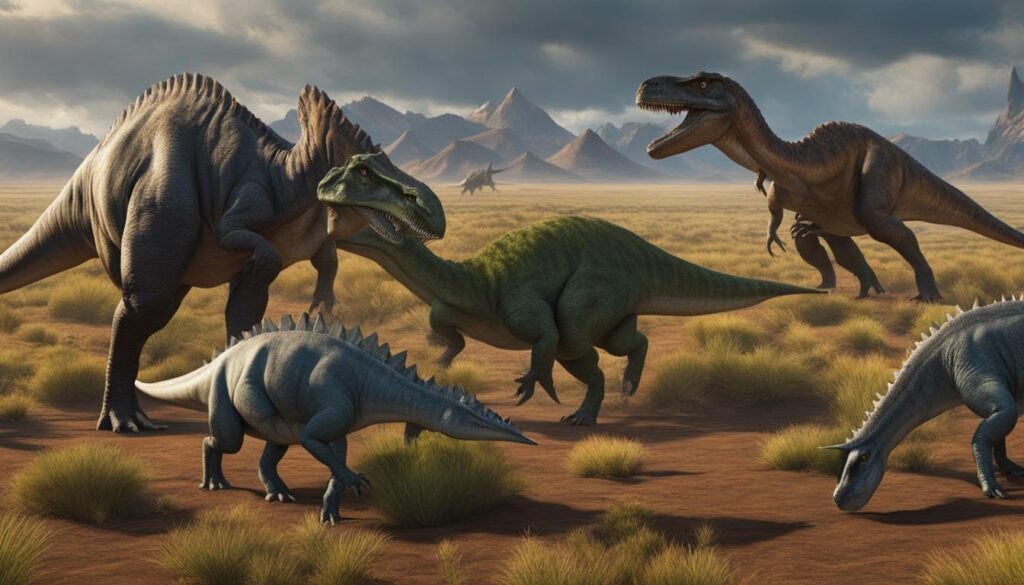
| Benefits of Herding Behaviors in Dinosaurs | Examples |
|---|---|
| Enhanced predator avoidance | Dinosaurs could fend off predators more effectively by banding together and coordinating defensive strategies. |
| Improved foraging efficiency | Living in herds allowed dinosaurs to search for food collectively, increasing their chances of finding sufficient resources. |
| Increased reproductive success | Communal nesting behavior and cooperation in raising young enabled dinosaurs to increase their chances of successful reproduction. |
| Shared knowledge and skills | Dinosaurs within a herd could learn from each other, passing down knowledge and skills that contributed to their survival. |
Reproductive Grouping and Nesting Habits
The discovery of communal nesting grounds and evidence of reproductive grouping in dinosaurs provides fascinating insights into their nesting habits and reproductive strategies. Fossilized trackways reveal that dinosaurs migrated and gathered in large numbers at specific sites for breeding and nesting purposes. This behavior suggests a coordinated effort to optimize survival and increase the chances of successful reproduction.
“The presence of mass nesting sites suggests that dinosaurs formed reproductive colonies and organized their nesting activities to optimize survival.”
Within these reproductive colonies, dinosaurs exhibited specific behaviors such as defense postures and group feeding habits. These adaptations played crucial roles in protecting their young and ensuring the survival of the group. By joining forces and adopting defensive positions, dinosaurs could effectively deter potential predators and safeguard their offspring.
For a visual representation of the reproductive grouping and nesting habits of dinosaurs, refer to the table below:
| Species | Mass Nesting Sites | Group Feeding Habits | Defense Postures |
|---|---|---|---|
| Sauropodomorphs | Multiple | Feeding in groups near nesting areas | Formation of defensive circles |
| Theropods | Individual nests | Individual hunting | Aggressive displays |
| Ornithopods | Multiple | Feeding in groups near nesting areas | Group defense by herding |
This table illustrates the variations in reproductive grouping, mass nesting sites, group feeding habits, and defense postures among different dinosaur species. These strategies highlight their adaptability and the complex social behaviors displayed by these ancient creatures.

Conclusion
The findings from the study on herding behaviors in dinosaurs provide valuable insights into their evolutionary success. The ability to live in herds allowed dinosaurs to optimize their habitat utilization and form social bonds, leading to the development of complex group structures and cooperative behaviors. This communal living resembles the pack behavior seen in some modern-day animals and highlights the importance of community organization in dinosaur survival.
Herding evolution played a crucial role in the ecological dominance of dinosaurs. By living in herds, they were able to utilize their habitat more efficiently, share resources, and protect themselves from predators. This social behavior also fostered social bonding among individuals, fostering cooperation and enhancing their overall chances of survival.
The study’s findings further solidify the understanding of dinosaur pack behavior and social dynamics. As these ancient creatures migrated, nested, and communicated within their herds, they developed intricate systems of social organization and coordination. These behaviors provided advantages in foraging, breeding, and predator avoidance, contributing to their long-lasting evolutionary success.
In conclusion, the study on herding behaviors in dinosaurs offers a glimpse into the fascinating world of these prehistoric creatures. Through their community organization, habitat utilization, social bonding, and dinosaur pack behavior, they flourished and dominated the terrestrial ecosystem for millions of years. Further research in paleontology and behavioral ecology will continue to uncover more details about the intricate social structures and behaviors of dinosaurs, shedding light on their extraordinary existence.

